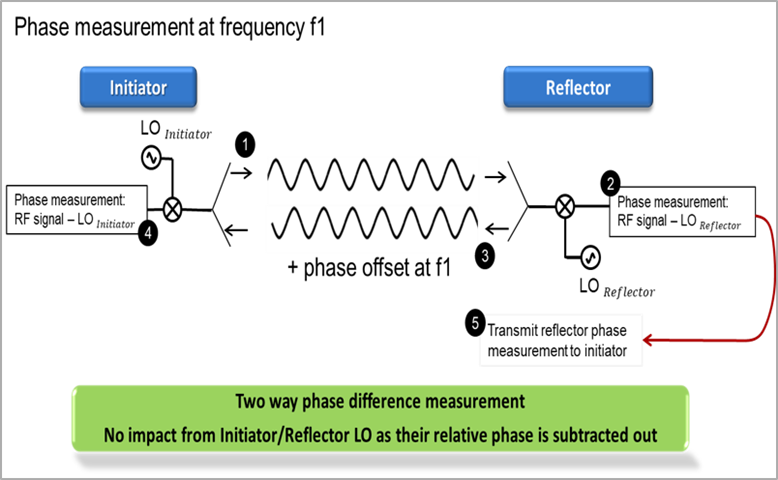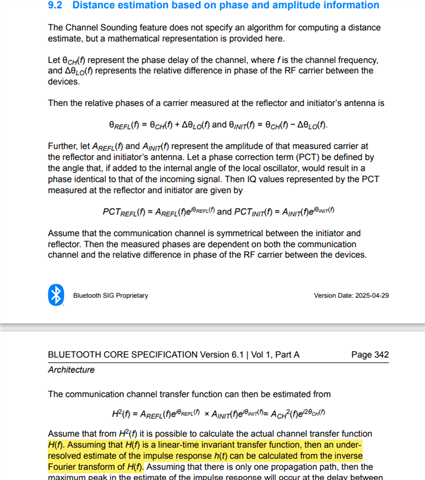Tool/software:
IQ data in the subevent csv file is it in time domain or frequency domain ? How it is extracted, is their some filtering done?
Is there any block diagram which I can refer ?
This thread has been locked.
If you have a related question, please click the "Ask a related question" button in the top right corner. The newly created question will be automatically linked to this question.
Tool/software:
IQ data in the subevent csv file is it in time domain or frequency domain ? How it is extracted, is their some filtering done?
Is there any block diagram which I can refer ?
Hello,
The phase data is in the time domain. The phase of the CS tones is compared with the local oscillator of the receiving device. The phase difference is the "phase data". Filtering is done when the phase data is collected using Multiple Signal Classification (MuSIC), or a Neural Network.
See the diagram below for the CS tones exchange:

Thanks,
Isaac
Hello Isaac,
But in the Bluetooth Specification Core 6.1, it is mentioned that we can derive Channel Impulse Response by applying IFFT on the Channel transfer function.
Channel Transfer function is derived from the PCT values of initiator and reflector which I understand from specification that PCT data is in frequency domain. Since applying IFFT on frequency domain will provide us with time domain.
Can you please provide more clarity here, 
Hello,
I am not saying that there is not change from time domain to frequency domain in the post processing. I am saying the phase data is collected in the time domain perspective. Additionally, the steps provided by Bluetooth SIG here is a basic example on how you can process the phase data to yield distance.
Note the first line those states: "The Channel Sounding feature does not specify an algorithm for computing a distance estimate, but a mathematical representation is provided here"(Bluetooth SIG, 2025, p.340).
The IQ data within the CSV file is time domain. This is the data collected directly from the CS steps, with no processing to compute distance. To compare to the spec, the IQ data in the csv file would be similar to the first equation:

Thanks,
Isaac
Hello Isaac,
Thanks for clarification. But help me understand reason behind the below implementation in PG2.0 script, which is confusing me.
Where does this change of PCT data in time domain to frequency domain takes place.
I am referring to the software PG2.0 and in the python scripts (ble_cs_functions.py, function- apply_fft() ) it has this comment